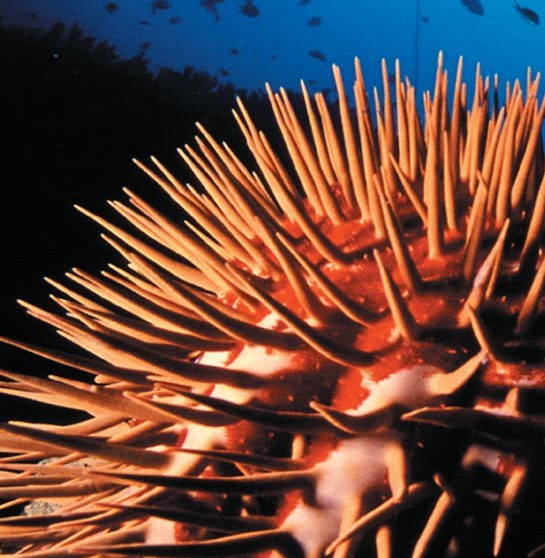Predators key to coral protection
 Research shows a range of fish are needed to keep crown-of-thorns starfish in check.
Research shows a range of fish are needed to keep crown-of-thorns starfish in check.
Crown-of-thorns starfish (Acanthaster spp.) are native to coral reefs in the Indo-Pacific. They are a major contributor to coral loss when found in large numbers, as they feed on the living tissue of many hard coral species.
“More than 50 years ago concern was raised that removal of predators may contribute to starfish outbreaks. However, at the time only one predator of the starfish was known, the giant triton sea snail,” says Dr Frederieke Kroon, an ecologist the Australian Institute of Marine Science (AIMS).
“Recent studies have revealed nearly one hundred species of coral reef organisms feed on different life stages of the starfish.
“Eighty of these are fish, including popular seafood species such as emperors, tropical snappers and rockcods.
“Our study is the first to explore how fisheries harvests of these fish species may affect starfish abundance.”
His study compared AIMS’ long-term coral reef fish and starfish abundance data at both open and closed reefs.
On reefs closed to fishing, biomass of emperors, snappers and rock cods was 1.4 to 2.1 times higher and starfish densities nearly three times lower, than those on reefs open to fishing.
The scientists also compared 30 years of reef fish harvest data from the Queensland Department of Agriculture and Fisheries with crown-of-thorns starfish abundance data from AIMS’ long-term reef monitoring over the same period.
Dr Kroon said the relationship between the fisheries harvests and the numbers of starfish was striking.
“We found crown-of-thorn starfish density increased in areas where more reef fish biomass was harvested,” she said.
“This relationship was strong for emperors, particularly redthroat and spangled emperors [Lethrinus miniatus and L. nebulosus], both of which are well-known predators of crown-of-thorns starfish.”
The relationship was also strong for tropical snappers and rockcods, including coral trout (Plectropomus spp. and Variola spp.).
“Since adult coral trout are not known to eat crown-of-thorns starfish, we are interested in what may explain this relationship. One possibility is that juvenile coral trout may eat small starfish, as part of their invertebrate diet,” Dr Kroon said.
“Combined, our results suggest that the removal of emperors, tropical snappers and rockcods contribute to increases in starfish numbers.”
The findings could be used to create new tools for controlling crown-of-thorns outbreaks.
“Starfish outbreaks continue to be a major cause of coral loss, but unlike other pressures like climate change, can be managed at local and regional levels,” Dr Kroon said.
“Targeted fisheries-based management, in combination with current crown-of-thorns starfish management interventions such as direct manual control, could assist in further controlling outbreaks.”








 Print
Print